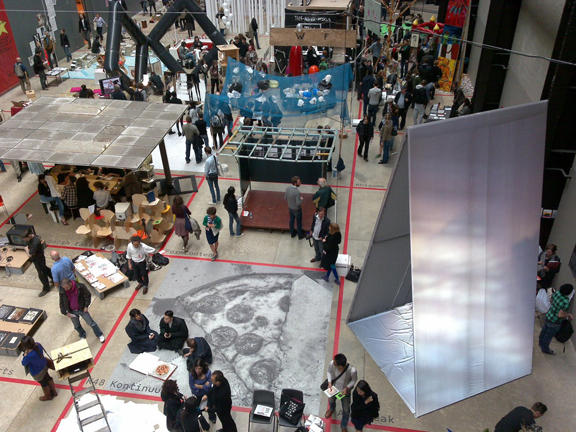
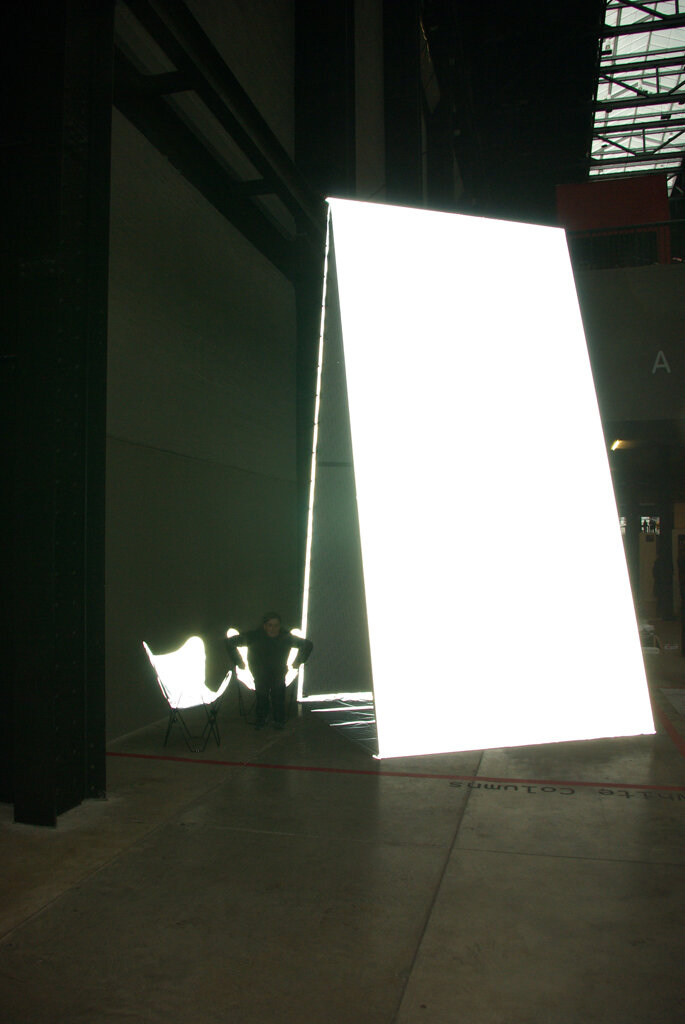

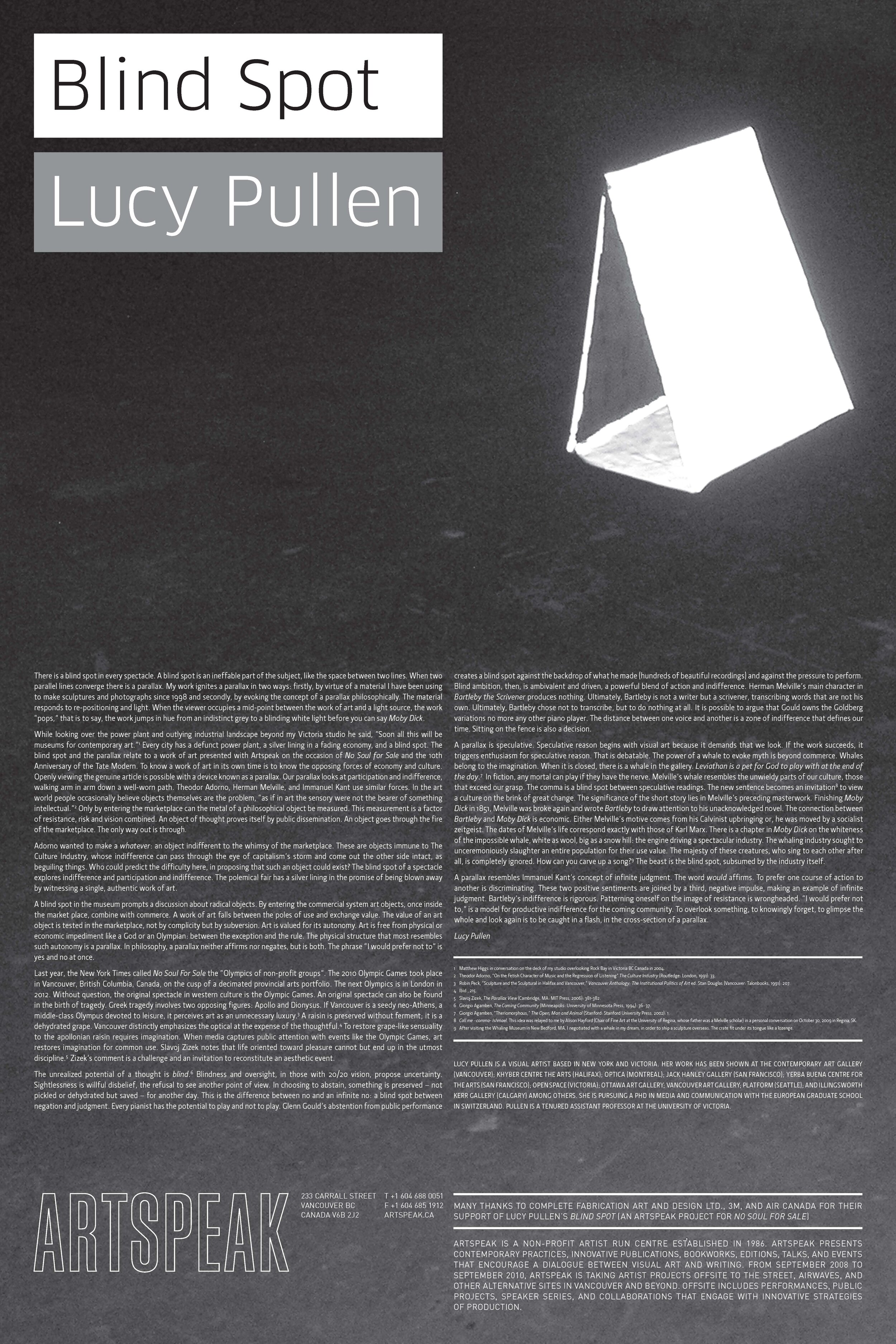

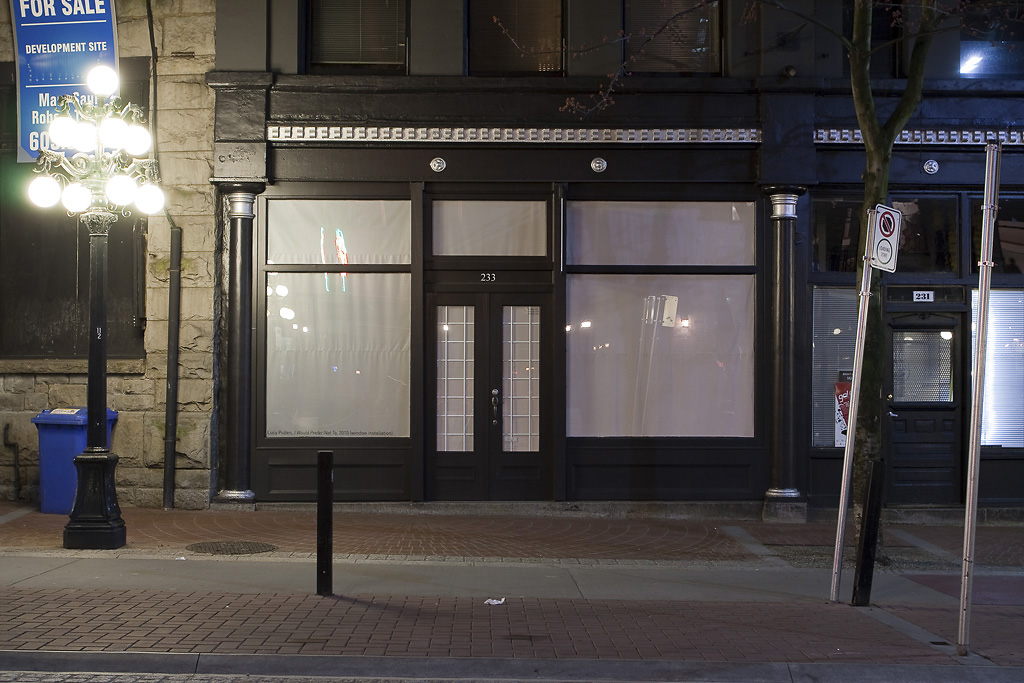

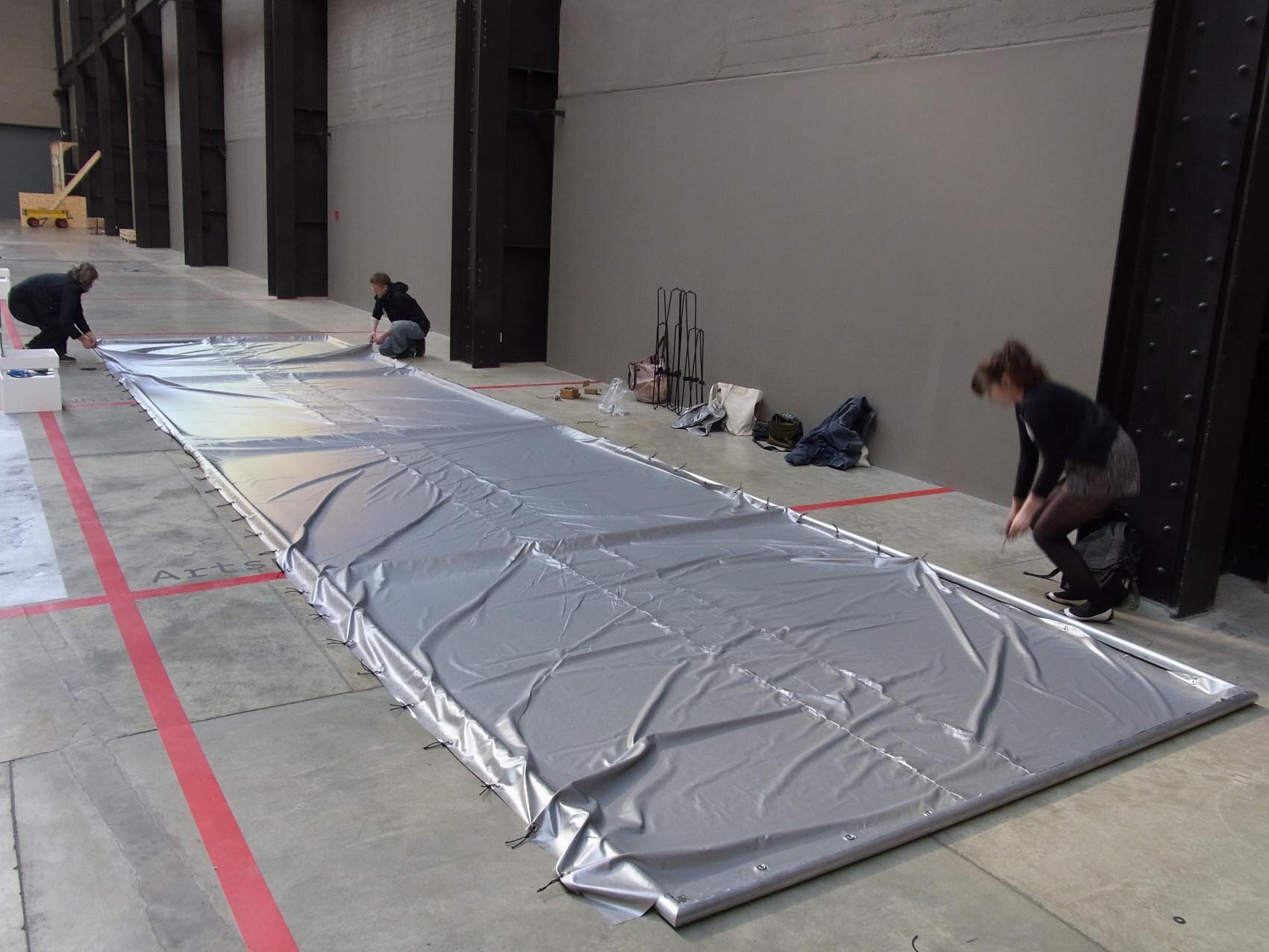

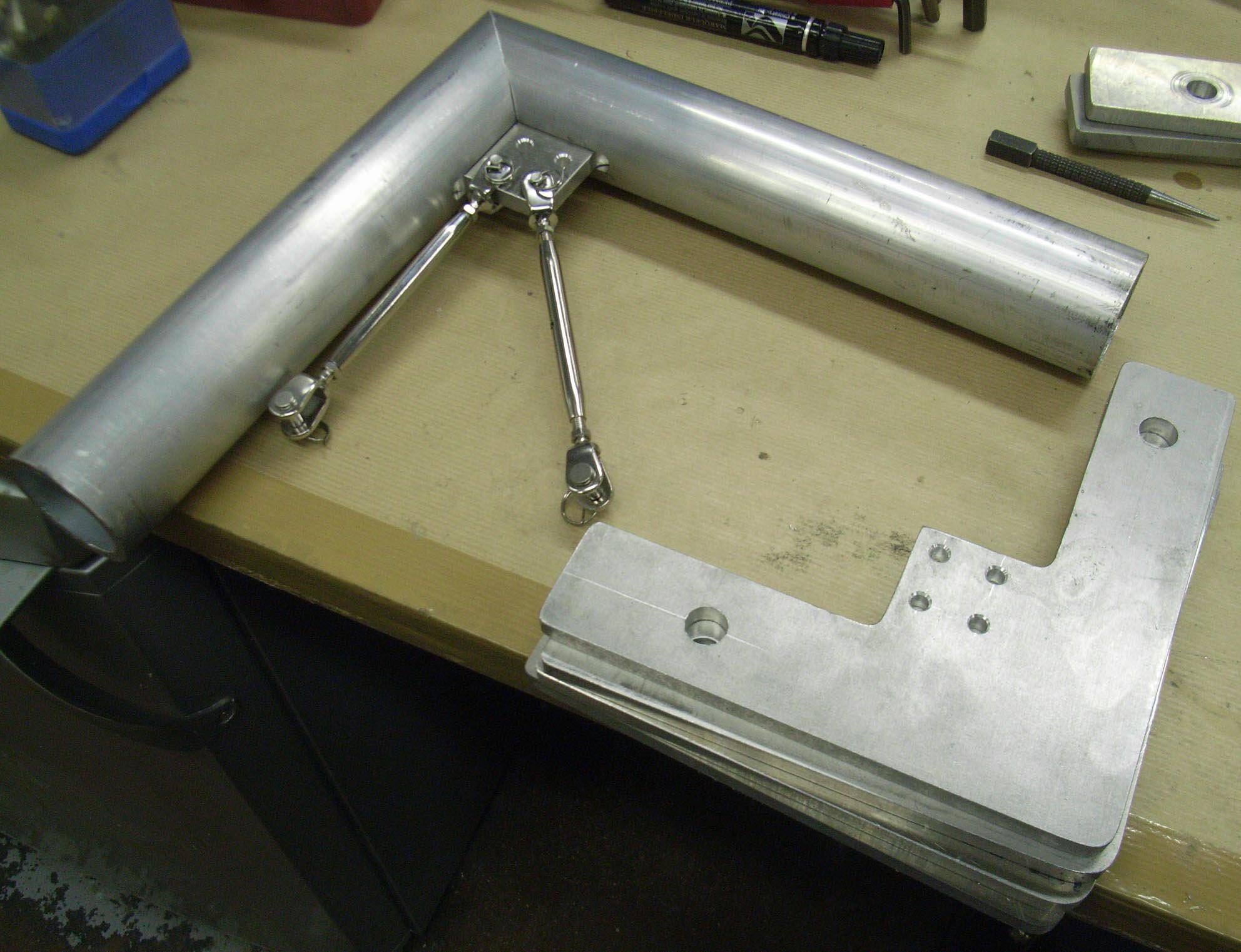
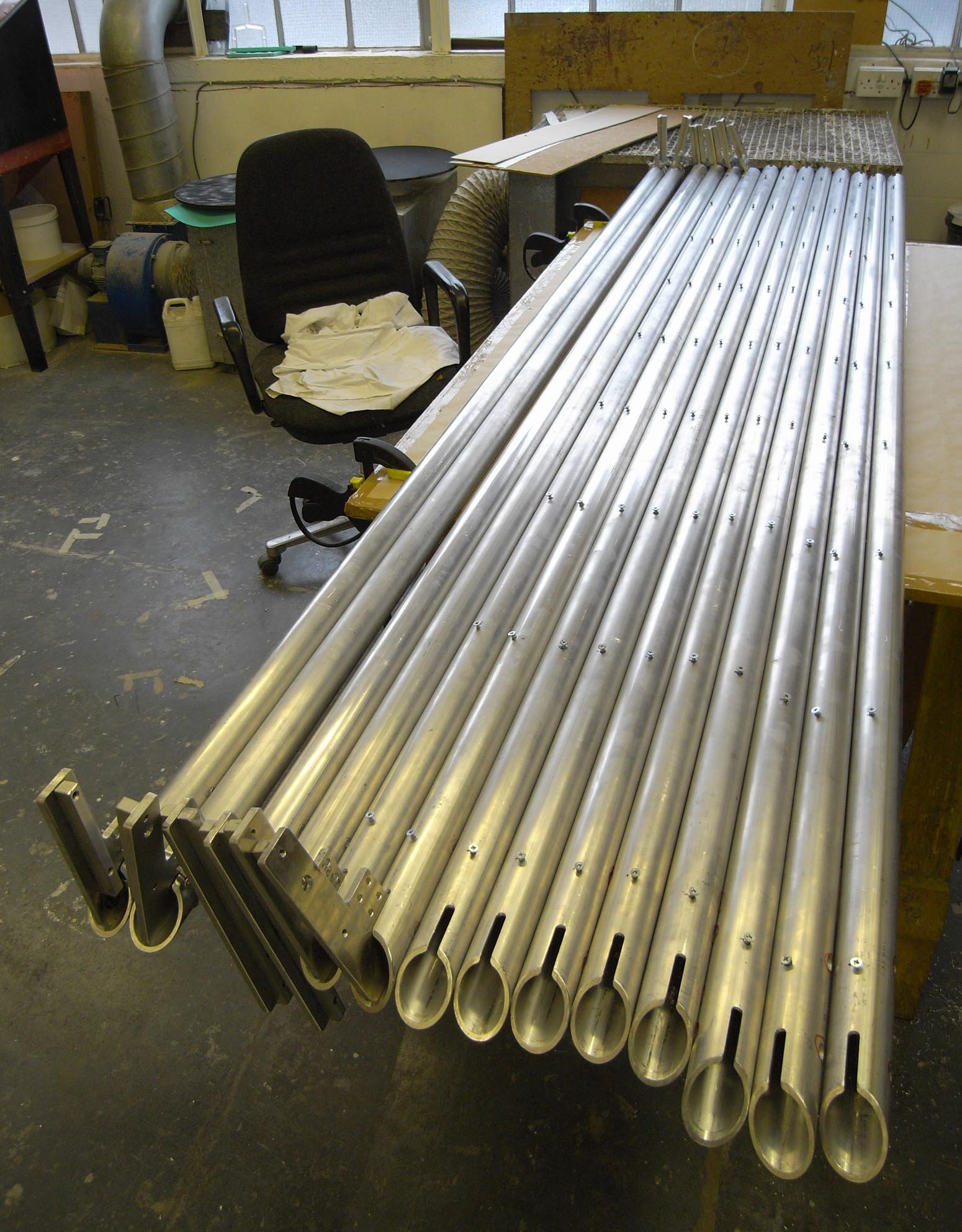

‘… all worldviews are partial. Some have a wider window of consciousness but all have blind spots.’ -Glenn Aparicio Parry
Blind Spot (2010) is an 18 foot tall freestanding sculpture made of aluminum and reflective material. 9 feet in width and length, the sculpture can be entered at either end, like a tent. In May 2010 Blind Spot was presented by ARTSPEAK at the Tate Modern in London England, as part of No Soul For Sale, a Festival of Independents curated by Cecilia Alemani. Made with 3M’s proprietary material ’scotchlite’, stretched over a custom made aluminum frame, Blind Spot responds to repositioning and light. As a person walks through the exhibition, the sculpture seems to shift in hue, from grey to blinding white.

“This opaque mirror reflecting back at me that other me, that other possible improbability or grayness.” Discussing colour gray, Carolina Trigo explores strangeness and a contracted light from a personal standpoint. “Me, that passage or standstill, that blind spot, that grayness or substitutability.”

“A grayness that seems to pervade as if I distinct. At times glistening, at times flashing up into a finite de that emits a gleam, into a lightness that seems to detach itself from its own voiding: the body.”

The sculpture was commissioned by Melanie O’Brian, the. Director of ARTSPEAK, as part of the exhibition in Vancouver. She writes, ‘Artspeak is presenting a project by artist Lucy Pullen at No Soul for Sale. Entitled Blind Spot, Pullen’s towering, freestanding tent-like structure is skinned in reflective fabric. An extension of her recent Artspeak project, I Would Prefer Not To (which pulled reflective blinds on the gallery during the Vancouver 2010 Winter Olympics), Pullen uses the same material to present the notion of a blind spot within the spectacle, positing Artspeak in a position of complicated stake-claiming, complicity, and refusal. The tent’s reflective fabric interrupts the process of mechanical reproduction. When photographed with a flash, a white hole appears in the image. When the viewer occupies a mid-point between the work of art and a light source, the work “pops” or jumps in hue from an indistinct grey to a blinding white light.

I Would Prefer Not To, 2010, Artspeak, 99 Carroll Street, Vancouver BC Canada, essay: Melanie O’Brian
For over ten years Pullen has used this material to make works of art (sculptures and photographs) that challenge media. Both exclusionary and interactive, Pullen’s tent questions ideas of participation and indifference, calling into question participation in the social, ethical, and economic conundrums surrounding events like No Soul for Sale as much as she does for large corporate parties such as the Olympics. Viewers are invited to photograph Blind Spot with flash and lens in close proximity.

I Would Prefer Not To, 2010, Artspeak, 99 Carroll Street, Vancouver BC Canada
Blind Spot (2010) follows I Would Prefer Not To (2010) a site-specific installation for the windows of Artspeak at 99 Carroll Street in Vancouver BC Canada, using 3M scotchlite at a scale, for the Olympic Games in Vancouver Canada.

3M generously donated Scotchlite to make this sculpture. Their proprietary reflective material is made with tiny glass beads embedded its surface that cause it to shift in hue.

Complete Fabrication designed and built the frame from 2” aluminum tubing in their workshop in East London.

The corners are held together with flat aluminum braces that slip into mitered pipe, and a tensioning system that imparts rigidity to across the 18 foot tall structure.

‘Is that your piece?’ Thurston Moore said, ‘Hi, I’m your tacky neighbor.’ Designed in New York and made in London with support from Gillian Pullen and Nick Corker who led the team at Complete Fabrication. Collection of the artist.